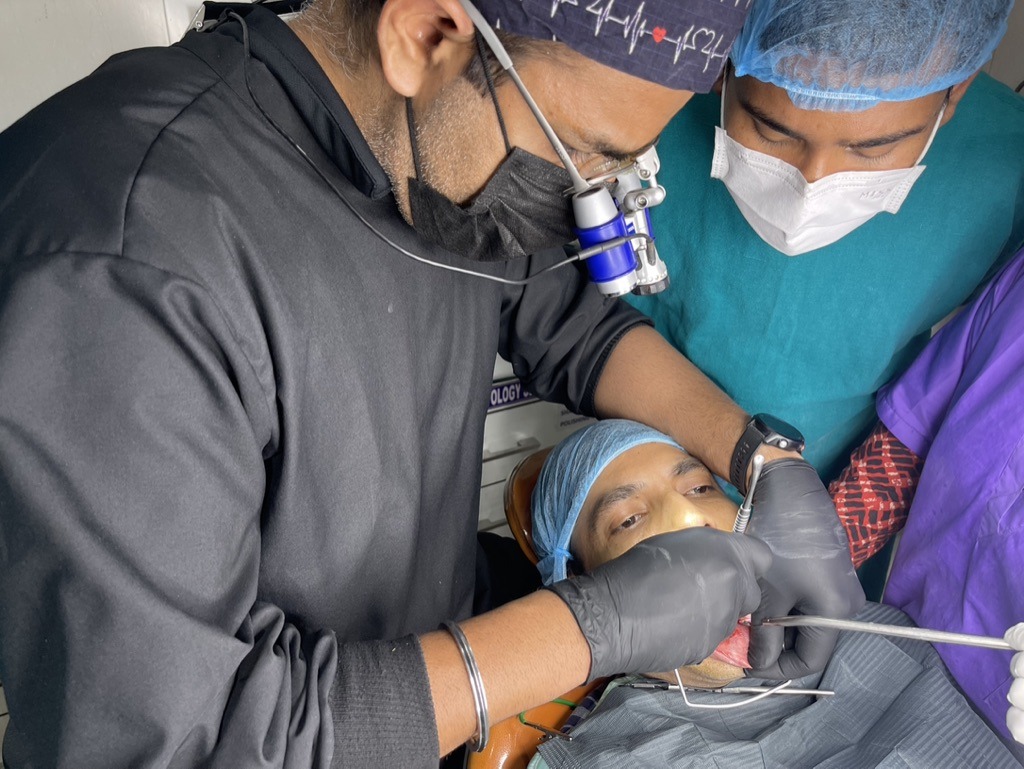
Mid – line
Heartwell defines the dental mid-line as vertical imaginary line that doesn’t necessarily coincide with the facial mid-line which runs vertically from the nasion, subnasal point, interincisal point & pogonion, perpendicular to the interpupillary line. Ideally the papilla between the maxillary centrals acts as a placement landmark & coincides with the mid-line of the face. In 75% of cases maxillary & mandibular midlines doesn’t coincide which is not esthetically unpleasant as mandibular teeth are not usually exposed while smiling. It demonstrates that the lower mid-line is not reference for the maxillary midline placement in cases of lost midline (premature tooth extraction).In any unrestored dentition slanting is an unacceptable major flaw.
Incisal length
The position of incisal edge of the maxillary central incisor is the important determinant in the creation of smile which sets a parameter upon which rest of the treatment is built. Elongation of incisal edge is often indicated to correct incisal wear, inadequate tooth display while shortening of incisal edge is required to compensate for unaesthetic elongation by periodontal recession. The visibility of central incisor while smiling rather than lips at rest tends to render an older appearance to the dentition. Therefore the visibility of the teeth when the mandible and lips are at rest is one of the most important factors in dental esthetics. In case of compromised incisal edges the upper and lower lips, exposed portion of the teeth are used as the reference points. When the mouth is slightly open, approximately 3.5mm of the incisal portion of the maxillary teeth is visible in a young person while mandibular teeth are barely visible. As age increases, the muscles become lax and slowly diminish the display of the maxillary incisors, while the visibility of mandibular incisors increases. The pronunciation of F and V sounds should also be used to determine the superior/inferior length of the incisal edges & buccolingual placement of the upper maxillary incisors is evaluated. For the veneers the S sound is used to determine the vertical height of dimension i.e the mandibular incisors should be in gentle touch with the palatal surfaces of the mandibular incisors being 1mm behind and 1mm below.
Zenith points
Zenith points are the most apical points of the clinical crowns i.e height of contour. They are located distal to a line drawn vertically through middle of each anterior tooth dictated by the root form anatomy, cementoenamel junction, osseous crest where the gingiva is scalloped the most. In Diastema closure the zenith points should be repositioned distally to avoid mesially tilted appearance. The extreme distal positions of the gingival zeniths will result in an exaggerated triangular form. In order to avoid this zenith points should be moved mesially to create an illusion of bodily shifted central incisors towards the mid-line. Zenith points are moved apically through elongation in cases of shorter teeth. Zenith points can enhance the perception of the tooth axis as well as the length and the gingival shapes, achieved by horizontal or vertical alterations.